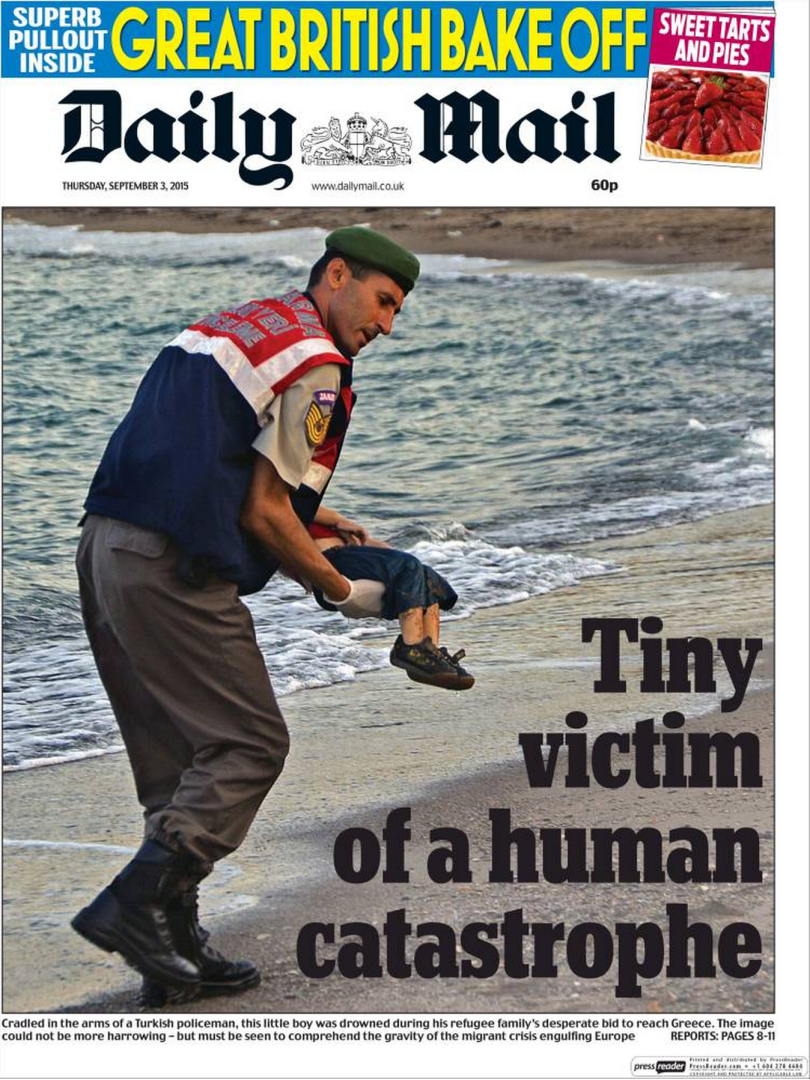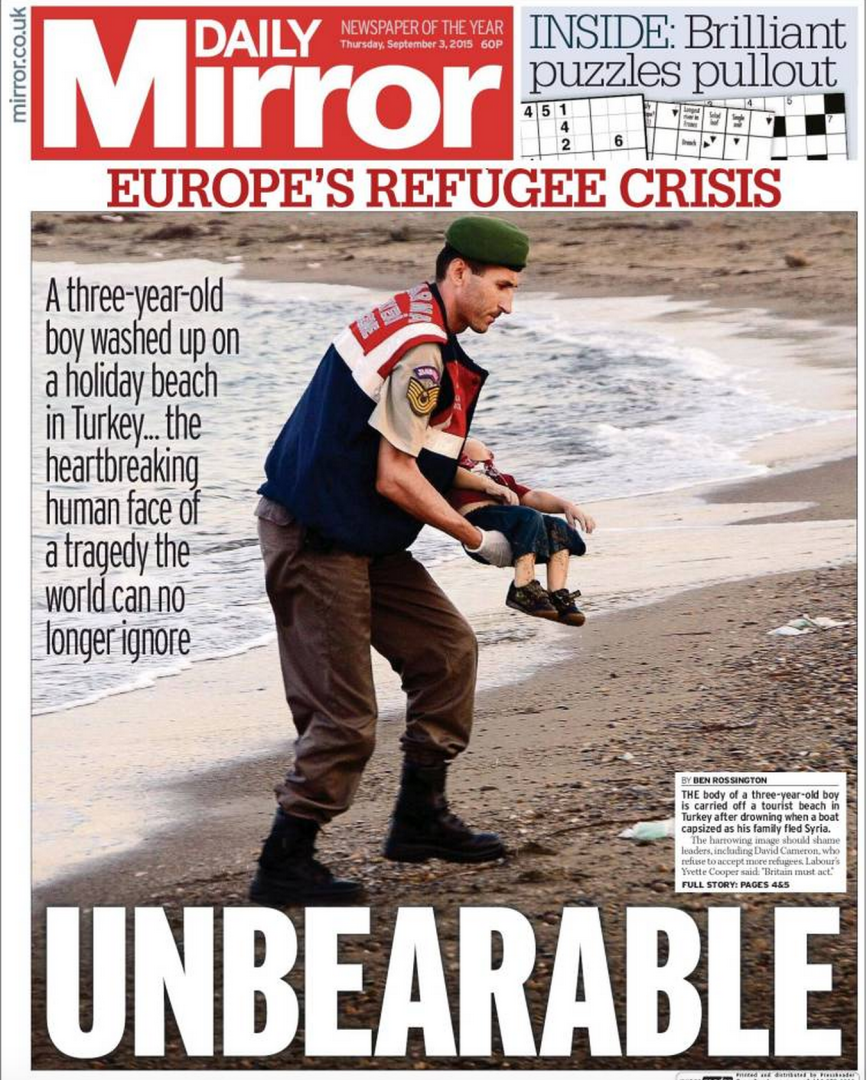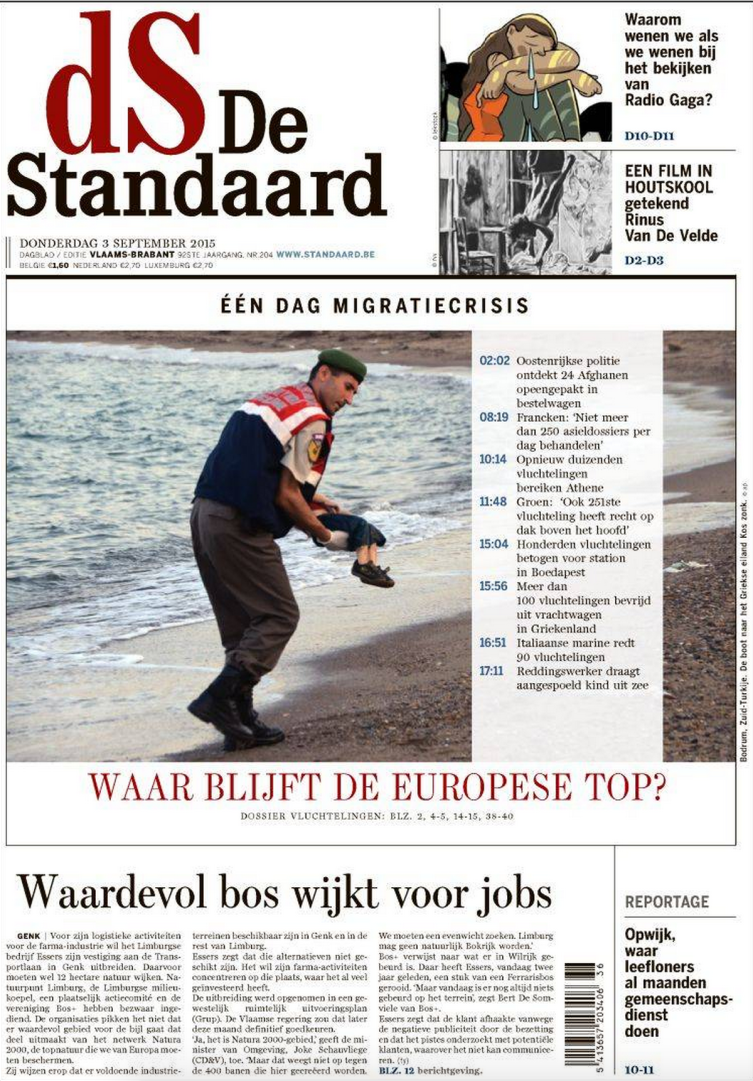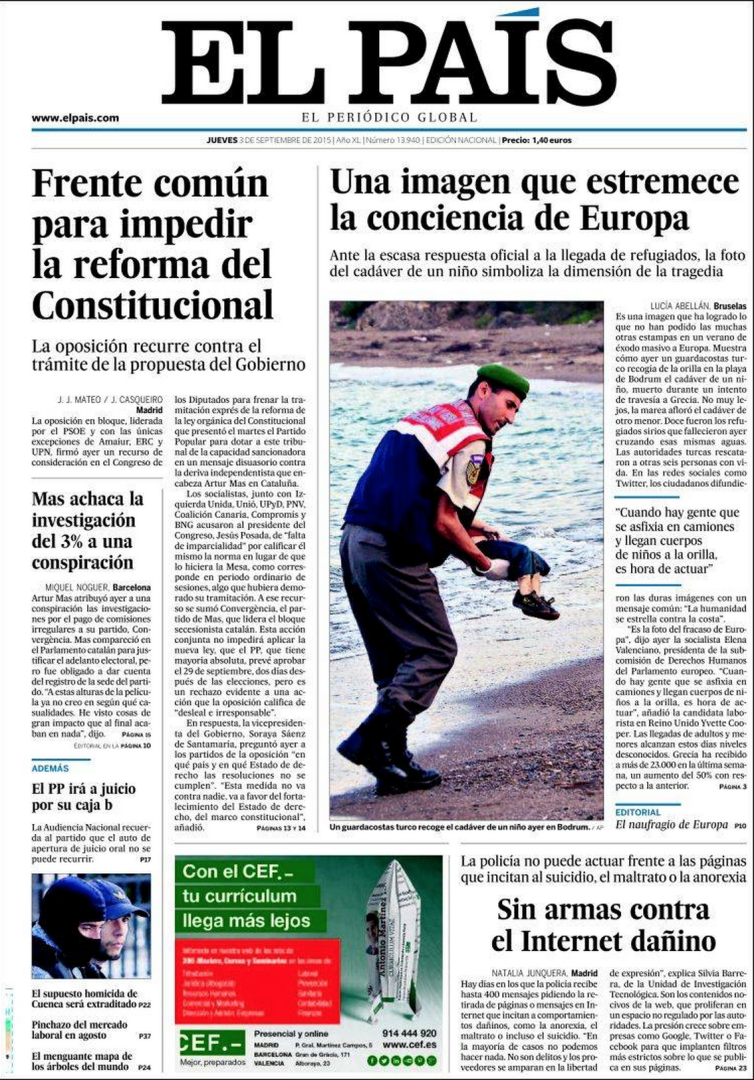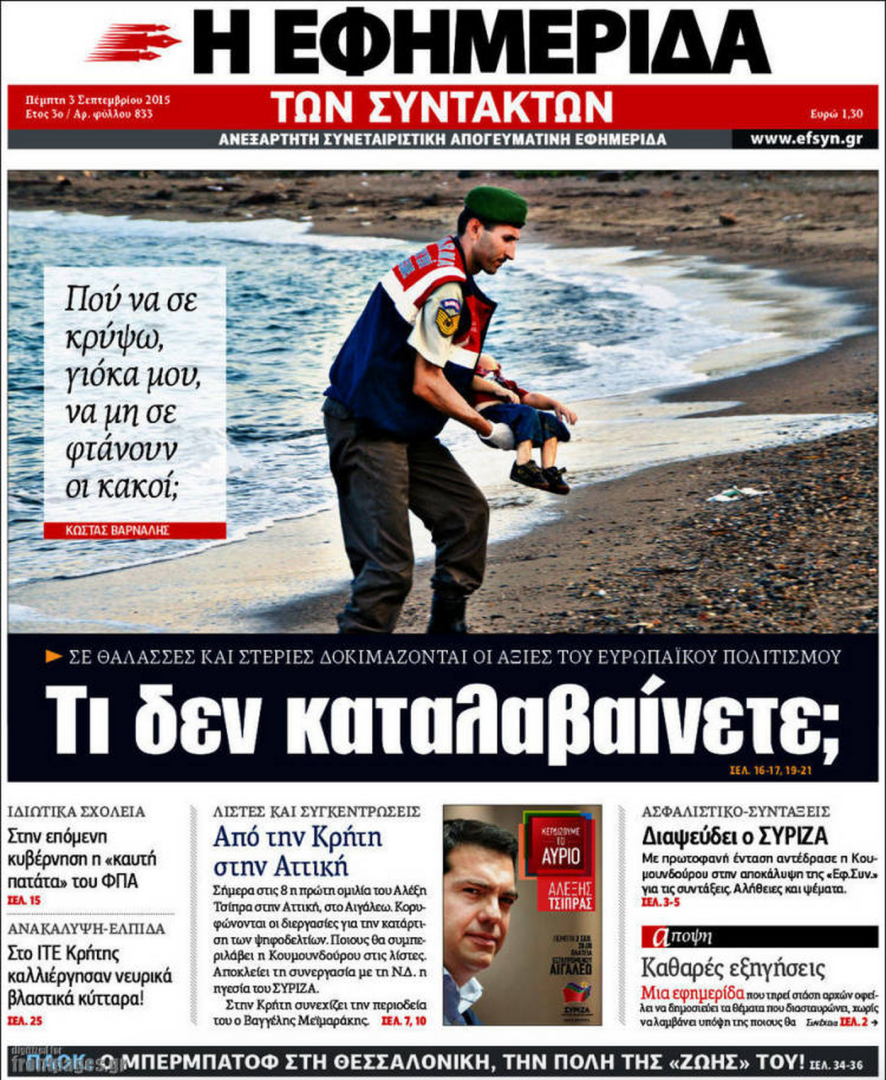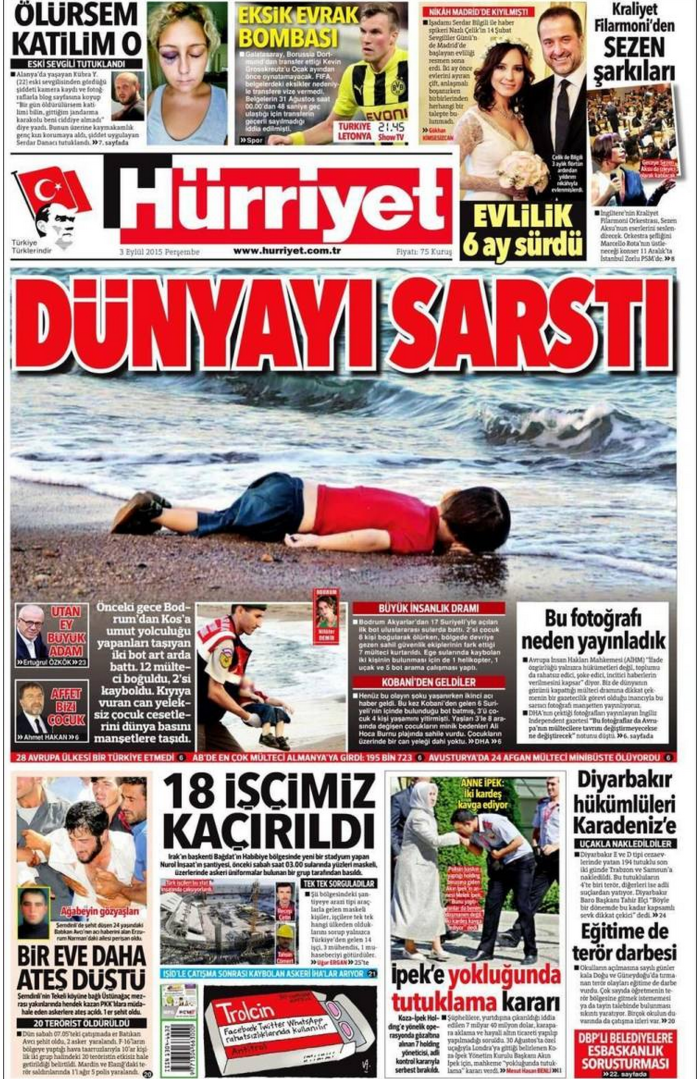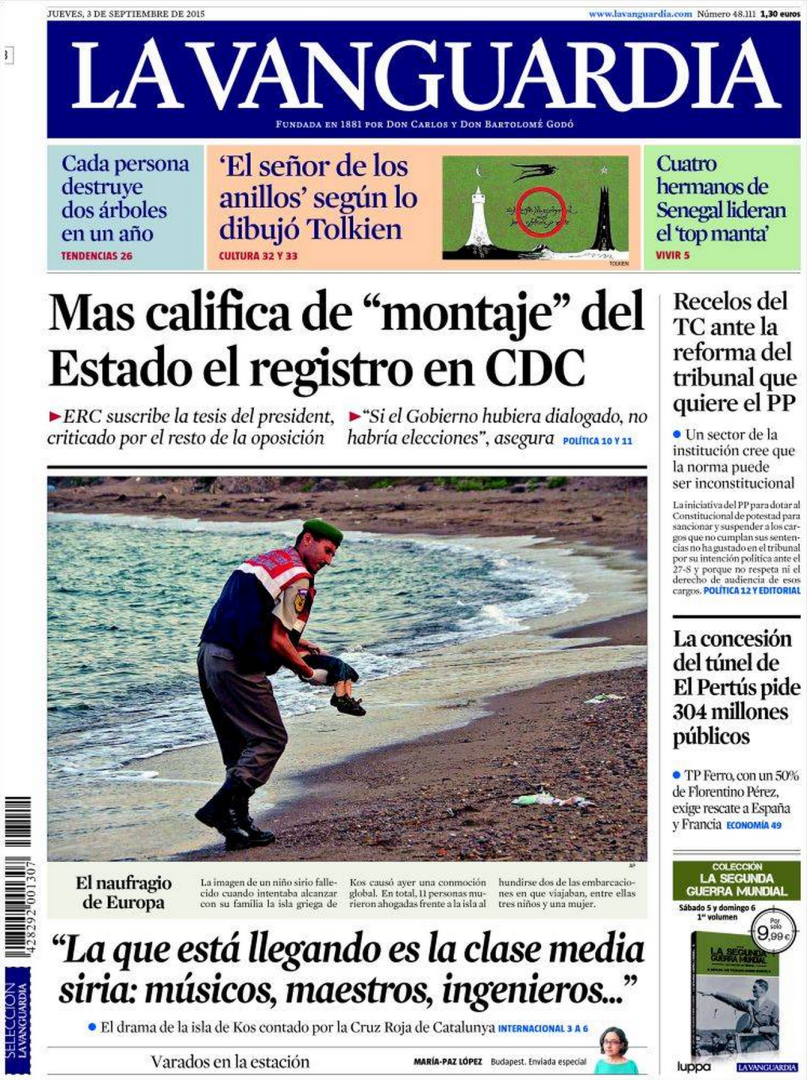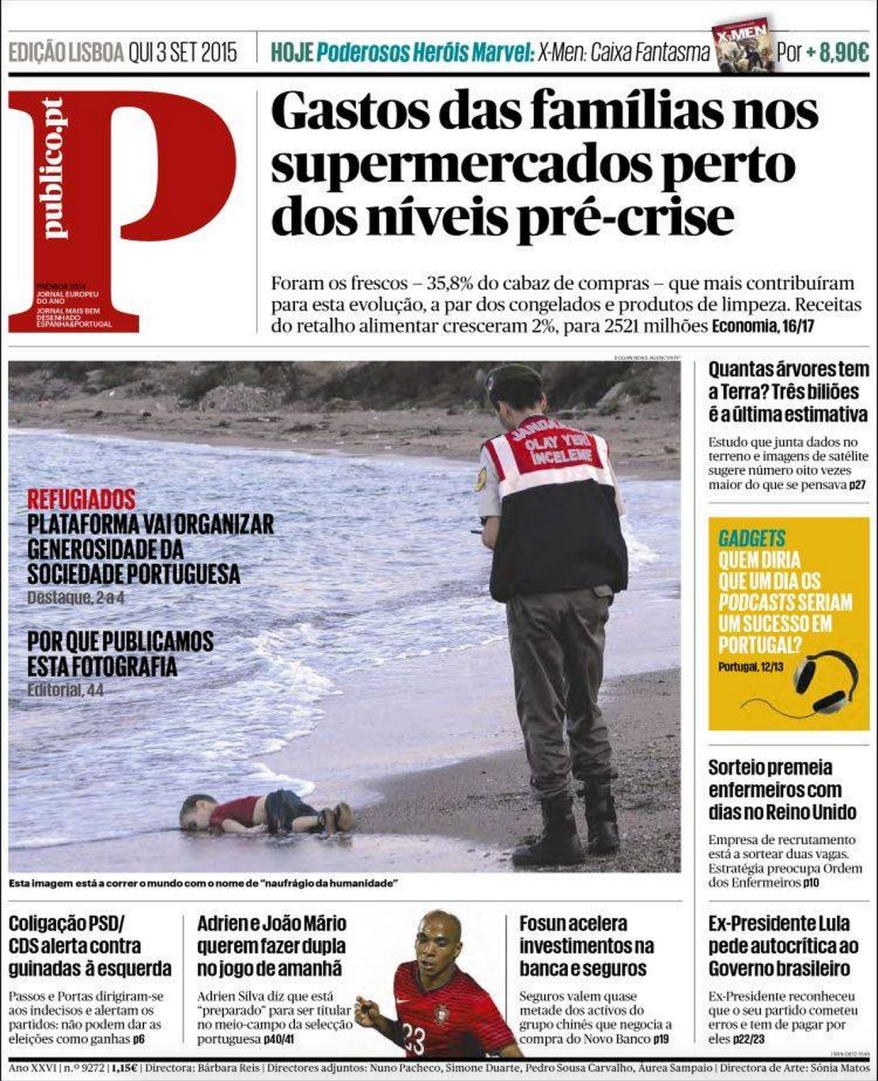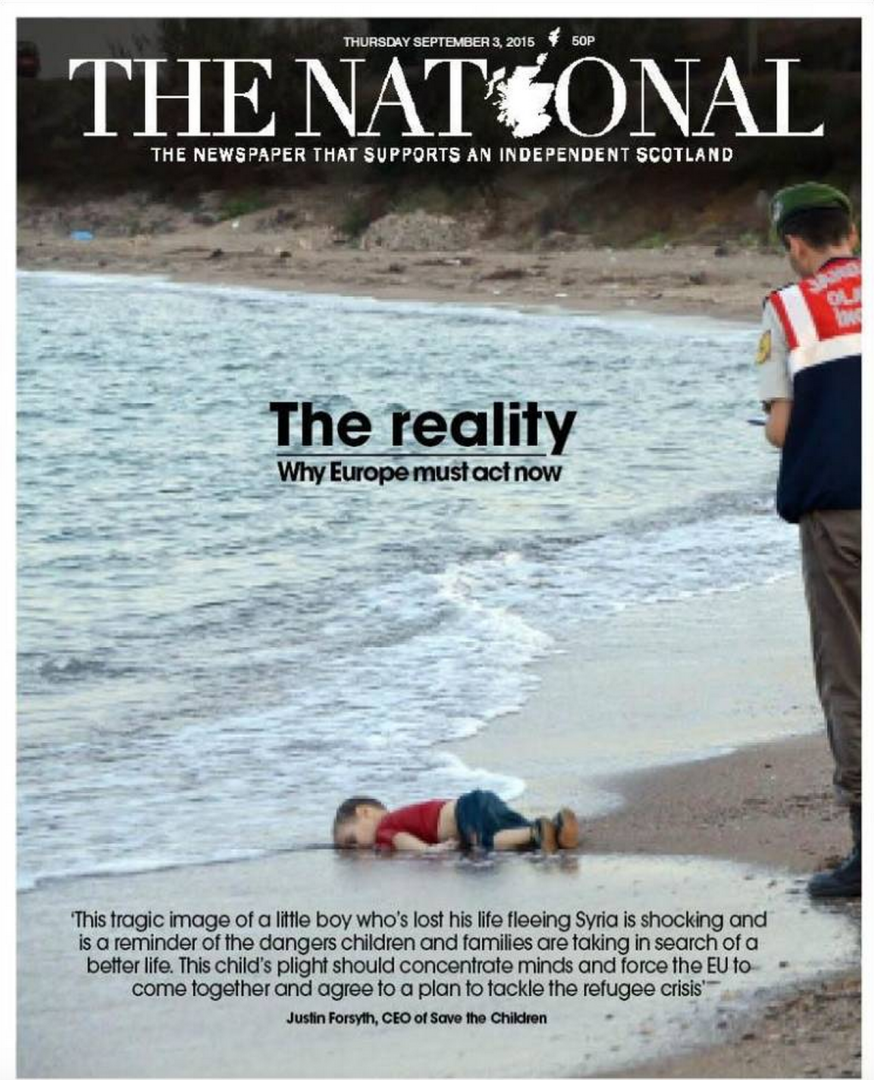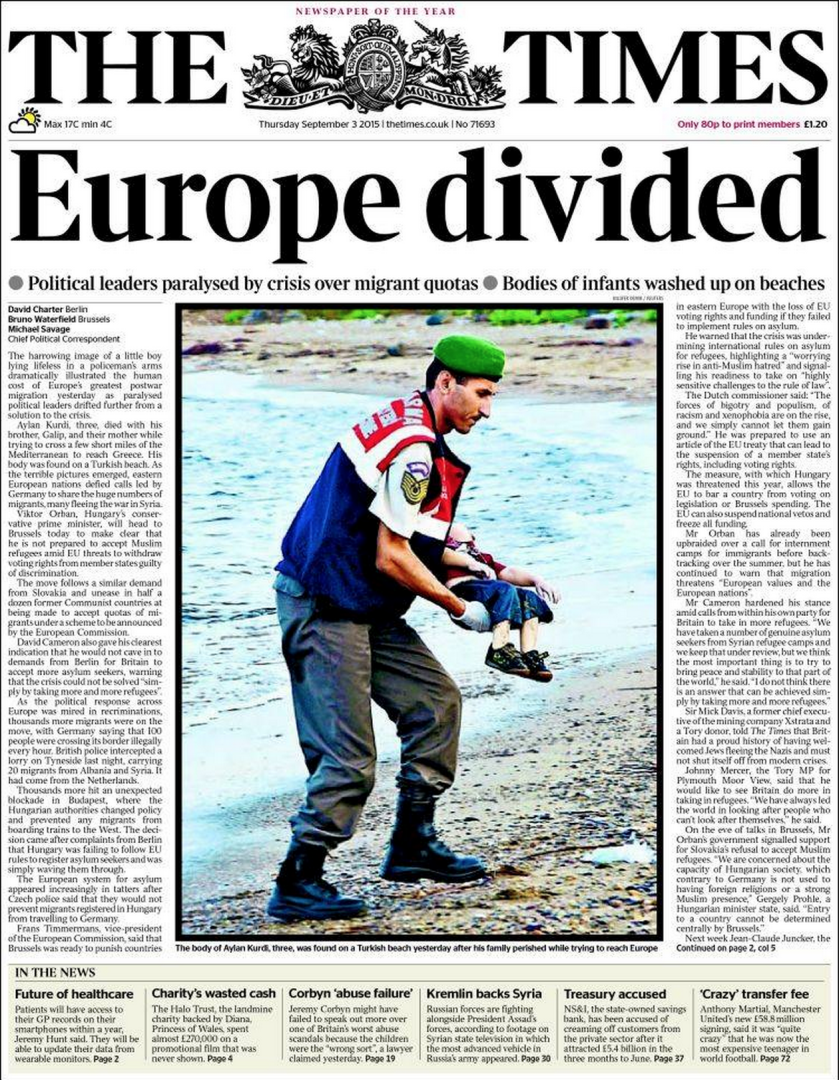IMAGERY WITHIN JOURNALISM – Aylan Kurdi
Please note that this explainer and links throughout contain the devastating and graphic images of Aylan Kurdi and Samar Hassan, which some viewers may find distressing. Please do not continue if you do not wish to see these horrific images.

The summer of 2015 captured the lives of many seeking refugee from the war engulfing that of many Middle Eastern countries, while also evoking much emotion among others via the press reporting on the tragedy, significantly with the release of many questionable and confronting images, along with that of young Syrian boy, Aylan Kurdi, whose lifeless body was captured and published among several news platforms around the world, becoming a symbol for Europe’s migrant crisis.
WHERE IS YOUR DIGNITY?
Why was this image published? Was there no thought of Aylan’s family? Should these graphic images have been published front page?
Although the question that sparked controversy among many still stands, as to whether the images should have been released to the public, due to the graphic and non-empathetic nature of the photographs. The publication of these images was thought to be unprecedent by many and should not have reached the covers of more than forty well renown headlines spanning from The National produced in Scotland, to as far as The Sun and Daily News, produced in Britain and New York. Among many that chose to report on, and publish the image of Aylan Kurdi, was a Dubai editorial, Gulf News, which is believed to have complied with the “Journalism Code of Ethics” and include a list of 26 statements, including that of number fourteen, which states “In crimes and issues dealing with children, names and photos should not be published.” Therefore, should they have considered not publishing horrific and emotional image of 3-year-old boy Aylan.
As stated within the core values of the MEAA Journalist Code of Ethics, members who engage in journalism should commit themselves to have “Respect for the rights of others” following by a more specific guideline, that of number eleven which ensures that journalist should “Respect private grief and personal privacy.” Thus, questioning Turkish photographer, Nilüfer Demir’s intent and perspective of the situation when capturing this image, among many others, and releasing them to the press for publication. Was Demir, among several other reporters right to receive criticism from audiences over the controversial images.
“A picture of a dead child is one of the golden rules of what you never published.”
Quoted within Time editorial article written by Oliver Laurent
The Independent, another publisher based in the United Kingdom, which found itself among the list who released the disturbing image, states within the article covering the tragedy of Alyan Kurdi that “The Independent has taken the decision to publish the image, which some may find offensive, lower down in this article because among the often glib words about the “ongoing migrant crisis”, it is all too easy to forget the reality of the desperate situation facing many refugees.” Although has this particular statement been published in an obscure attempt to cover the fact that publishing this image was wrong and immoral or is this an attempt to show empathy towards Aylan’s family.
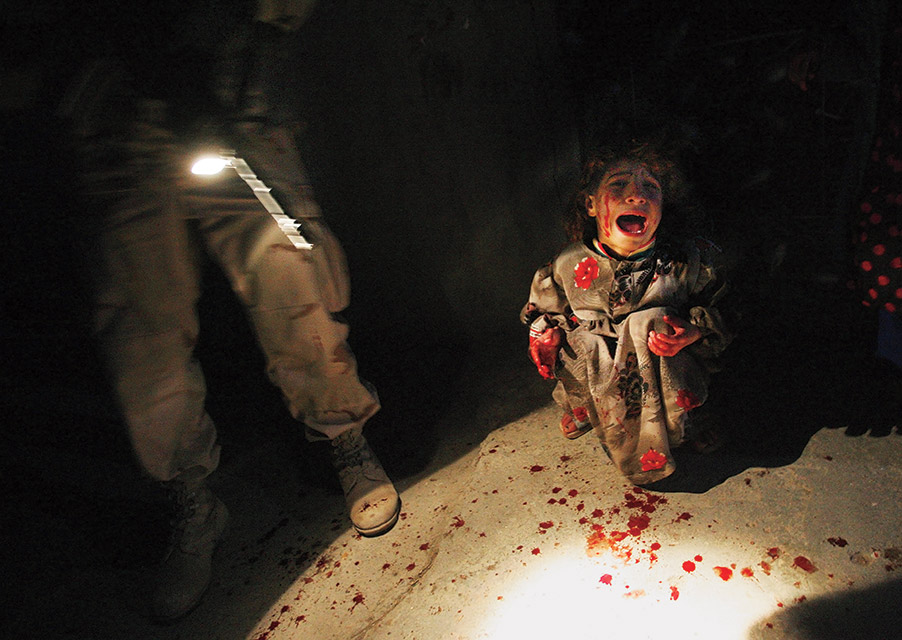
An article published via Time, titled “The Most Influential Images of All Time” is dedicated to showcasing some of the words most influential images, including that of Muhammad Ali in his winning fight against Sonny Liston, captured by Neil Leifer in 1965. Along with an image on the darker end of the spectrum, which closely relates to the traumatic and controversial image of Aylan, sparking outrage among viewers, the image captured by Chris Hondros in 2005 features of young Iraqi girl, Samar Hassan, screaming and covered in the blood of her parents after her family’s car had been shot dead at Iraqi checkpoint by U.S. soldiers. There stands the question of whether images of this horrific nature should be publicised or not, are they creating awareness or provoking fear and outrage.
THE WORLD DESERVED TO KNOW
The migrant crisis which took the lives of many was left unspoken until the devastating images were released which shocked a nation into awareness.
Unlike what some thought of the image, the publication took a stand for the migration of refugees, and how many of the European countries should become more accommodating and assisting in the migration of people fleeing from war torn countries such as Syria, the country which originally housed that of Aylan and his family, the country he, his mother, and his brother lost their life fleeing form, the last country they stepped foot on before a untimely and devastating death. After the image was capture and first published via Human Rights Watch, Peter Bouckaert, as stated within an article published by Bryan Walsh of the Time editorial regarding Aylan’s death, “In death, Alan became a symbol of all the children who lost their lives trying to reach safety in Europe and the West, the face of the biggest story of 2015.”
Before the image of Aylan reached the headlines of many publications around the world, most of the European population did not seem aware nor interested in the ever-growing migrant crisis that was partaking in the middle eastern portion of the world. No number of publications or news reports seemed to really grab the attention of the audiences, and really make them consider the humanitarian and devastating crisis occurring within Syria and other neighbouring countries, and how they could assist in those seeking refuge from their now war-torn homes, such as that of Aylan Kurdi and his family. Therefore photographer Nilüfer Demir took it upon herself to pick up her camera, and take the now iconic picture that shook the nation, and ticked every empathetic heart to start the movement towards a more positive outcome for fleeing migrants from war-torn areas such as Syria.
After reading let me leave you with some questions to consider:
What does this mean for the future of journalism?
Did the publication of this image do justice to the cause and make a difference?
Should images of this nature be considered as public interest?
Should Aylan’s body have become a symbol to be portrayed over numerous front pages?
Are these controversial images worth the risk?
Featured Photograph by Mstudio.
